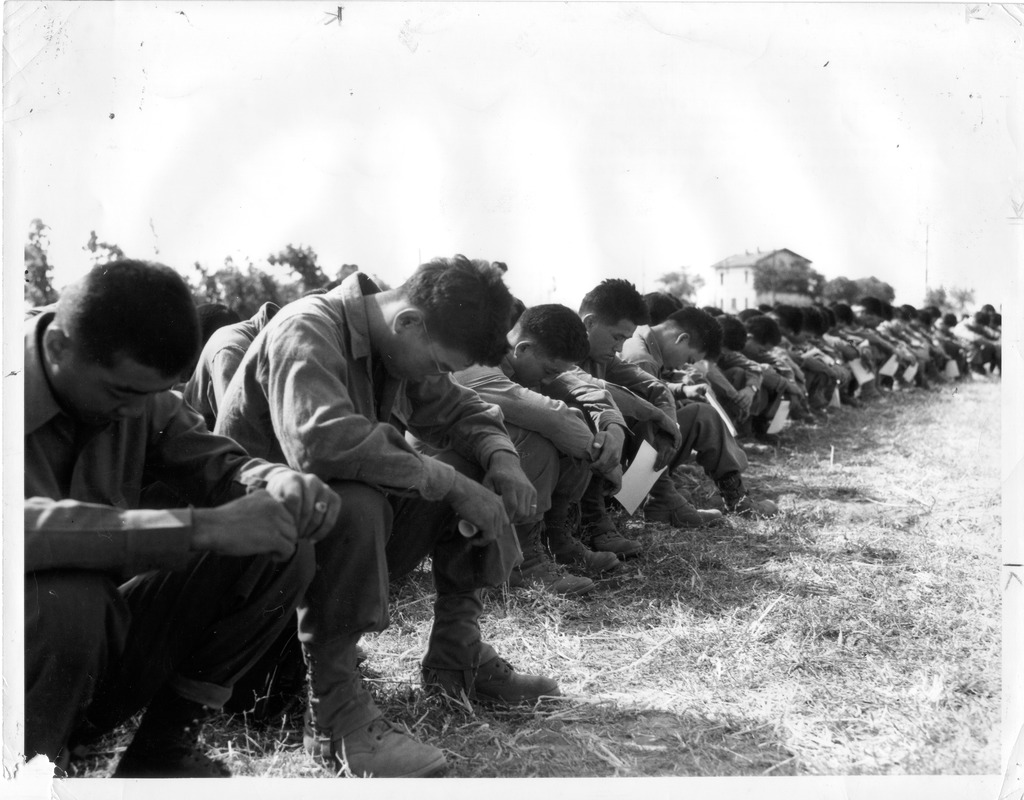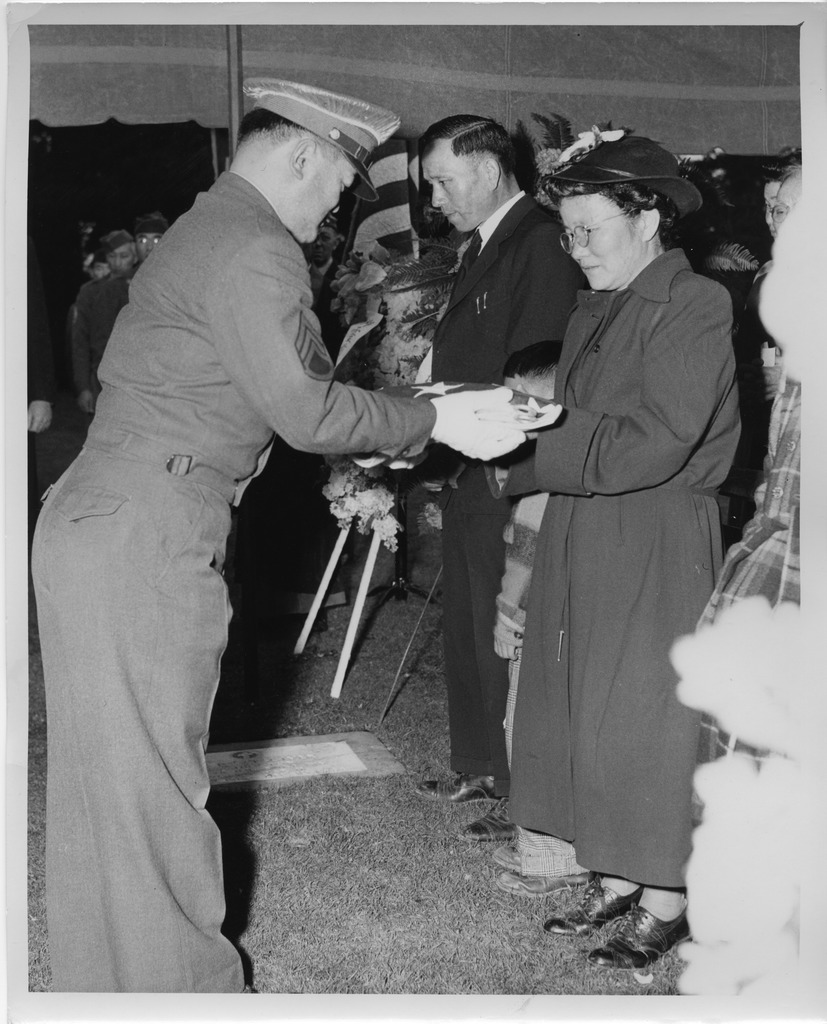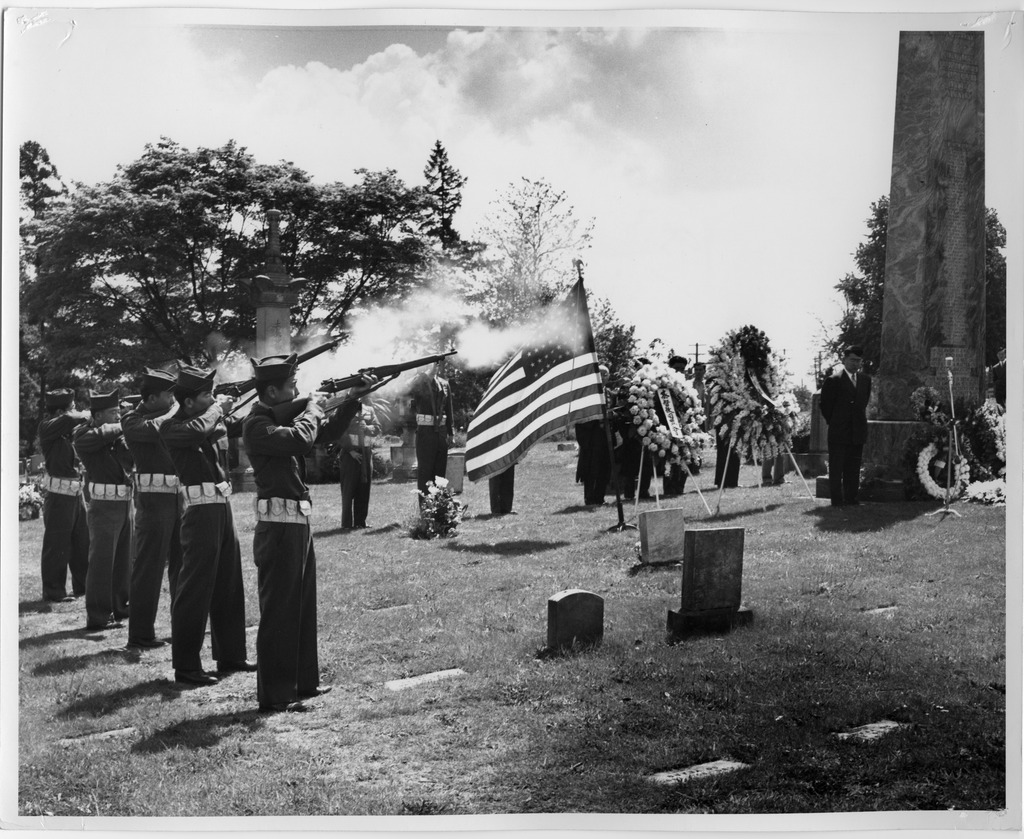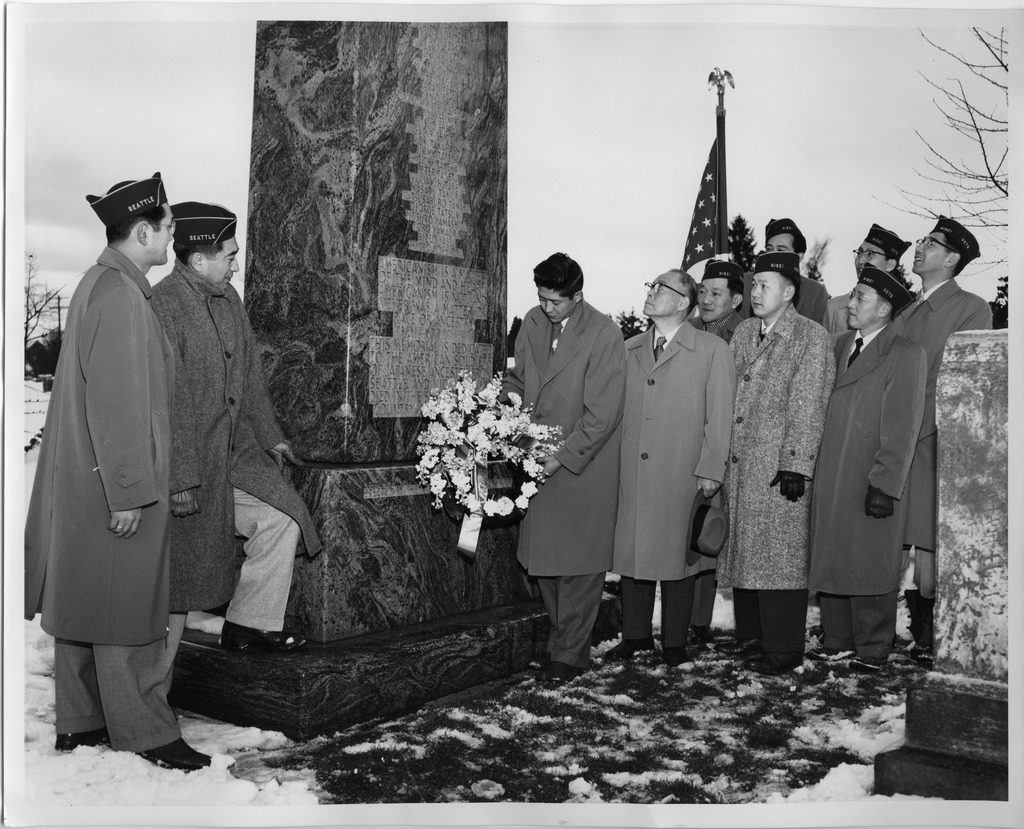May 21, 2015
The sacrifices of the men who gave their lives in the war effort have been recognized with honor rolls, memorials to the fallen, monuments to the units, and living memorials, though it took decades for nationally visible monuments to emerge in the United States.
This photo essay explores how fallen soldiers were honored, both during the war and in its aftermath.
1. American soldiers of Japanese descent of the 2nd Battalion, 442nd Infantry Regiment, bow their heads in prayer for their departed comrades who gave their lives in combat, Battalion Headquarters area near Cecina, Italy, 1944. Seattle Nisei Veterans Committee Collection.
2. Memorial service for Amache servicemen killed in action, 1942-45. George Ochikubo Collection.
3. Mrs. Shizuko Kina receives the Silver Star Medal posthumously awarded to her brother, Pfc. Tomaki Shimabukuro, during a ceremony in Honolulu. The presentation, by Chaplain Corwin H. Olds, CPBC, was made for gallantry in action with the 2nd Bn., 442nd Reg. Combat Team, near Bruyeres, France. August 1945. Seattle Nisei Veterans Committee Collection.
4. Service at the Tacoma Buddhist Church, 1949. Seattle Nisei Veterans Committee Collection.
5. A Nisei soldier gives the flag to a grieving mother, 1948. Seattle Nisei Veterans Committee Collection.
6. Nisei veterans at memorial site, 1948. Seattle Nisei Veterans Committee Collection.
7. Memorial Day parade, 1949. Seattle Nisei Veterans Committee Collection.
8. Memorial service at Lake View Cemetery, 1953. Seattle Nisei Veterans Committee Collection.
9. Nisei War Memorial at Lakeview Cemetery, 1956. Seattle Nisei Veterans Committee Collection.
—
Enlistment in WWII was a difficult decision for many Japanese American citizens, one that was often laden with competing personal, familial, and community obligations and desires. Here, Tosh Yasutake discusses his conflicted views about joining the military. Watch more interviews about Japanese American WWII military service here.









